Have you ever heard Meta nerds constantly banging on about conversion rate optimisation (CRO)?
Well if so, it is for good reason.
CRO is an important metric in the world of digital marketing, so much so that it can be an all-consuming metric for some businesses.
If they don’t see a pleasing CRO percentage then they might just go into a state of panic.
If you’re not sure about what CRO is or why it’s important, then you’re going to want to read this blog.
We’ve got some juicy CRO content that will be sure to send your frontal lobe into a frenzy.
Without further ado, let’s get into it!
What is Conversion Rate Optimisation?
Conversion Rate Optimization (CRO) is the process of increasing the percentage of visitors to a website who complete a desired action.
These actions include:
- Making a purchase.
- Signing up for a newsletter.
- Filling out a contact form.
The ultimate goal of CRO is to maximise the value of existing traffic by turning more visitors into customers, thereby enhancing overall business performance.
Why is Conversion Rate Optimisation Important?
Unless you’re writing a personal diary entry on the internet in the form of a blog, then CRO is going to be pretty crucial for you.
It focuses on improving the percentage of website visitors who complete a desired action.
If you’re not focused on CRO then you’ll be happy for visitors to come onto your site and leave just as quickly.
But for those who want to improve their CRO, you will need to look at areas to improve your site that could influence that coveted conversion.
If you can increase your CRO then you have the potential to grow your business through:
- Increased revenue from product sales.
- More leads via a lead form.
- A boost in email subscribers.
What is a Good Conversion Rate?
A ‘good’ conversion rate really depends on a number of factors, including:
- Industry.
- Business model.
- Traffic sources.
- Specific goals of a website or campaign.
However, generally speaking, a good conversion rate is one that is higher than the average for your industry and consistently improving over time.
Conversion rates can vary widely across industries and even within the same industry.
For example, an e-commerce website might consider a 2% conversion rate to be good, while a niche B2B software company might aim for a much higher conversion rate.
As a business, you should strive to optimise your conversion rates over time by testing and refining different strategies, analysing data and focusing on providing value to your target audience.
How to Calculate Conversion Rate Optimisation
The image below is the formula for calculating conversion rates.

Don’t worry if you find formulas more confusing than a lighter made out of chocolate.
Let’s look at the example below to help:
Suppose you have a website with the following data for a month:
- Total visitors: 10,000.
- Total conversions: 500.

This means that 5% of the visitors to your website are completing the desired action.
See, formulas aren’t that scary!
Conversion Rate Optimisation Best Practices
Here are some best practices for CRO:
Understand Your Audience
Develop detailed profiles of your target audience to tailor your website’s content and design to their preferences.
If you don’t know your audience then how can you entice them to convert?
Understand the steps users take on your site from entry to conversion to identify potential drop-off points.
This involves creating visual representations of the user’s interactions with your site, which can reveal obstacles that prevent conversions and highlight areas for improvement.
Data-Driven Decisions
The details are in the data when it comes to CRO!
Use tools like Google Analytics to track user behaviour, conversion rates, and identify bottlenecks.
These insights allow you to make informed decisions about where to focus your optimisation efforts.
Regularly conduct A/B tests to compare different versions of a webpage to see which performs better.
This approach helps you understand which elements resonate most with your audience and drive higher conversions.
As the age old saying goes, ‘Test, test, test then test some more’.
Improve Website Usability
Ensure your site is fully responsive and works seamlessly across all devices.
With a significant portion of web traffic coming from mobile devices, a mobile-friendly site is essential for maintaining and improving conversion rates.
Think about it.
There are billions of smartphones all over the world so by not optimising for mobile you’re shooting yourself in the foot.
For more website conversion optimisations, check out our blog.
Optimise Landing Pages
This is a crucial step.
An unoptimised landing page will be as effective as a raincoat made out of paper.
This is why you need to ensure your CTA (call to action) buttons are prominently displayed and use action-oriented language.
Effective CTAs guide your users towards the next step and are crucial for converting visitors.
Enhance Trust and Credibility
Incorporate testimonials, reviews, case studies, and trust badges to build credibility.
These elements reassure potential customers about the quality and reliability of your products or services.
Clearly display contact information, return policies, and terms of service.
Transparency increases trust, making visitors more comfortable with making a purchase or providing personal information.

The Masters of CRO – Blaze Media
CRO can be quite overwhelming to the uninitiated…that’s why we like to put posts such as this one together.
But if you want real results with your CRO efforts you’ll need to employ the help of some experts who know what they’re doing.
That’s where we come in.
We’re a full-service digital marketing agency that runs paid ad campaigns as a service for our clients who are based in a wide range of industries.
Our experience with many different campaigns has allowed us to adopt innovative strategies that we’ve seen get outstanding results.
If you’re interested in getting started with Google Ads or another paid ad campaign then please reach out to us today.


